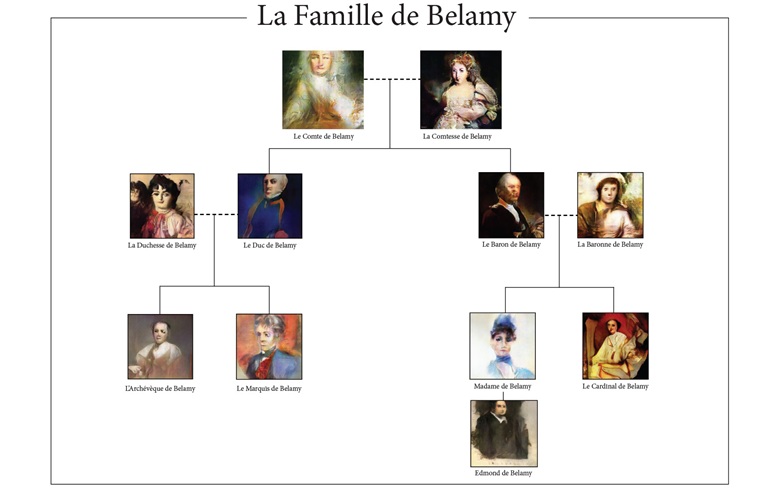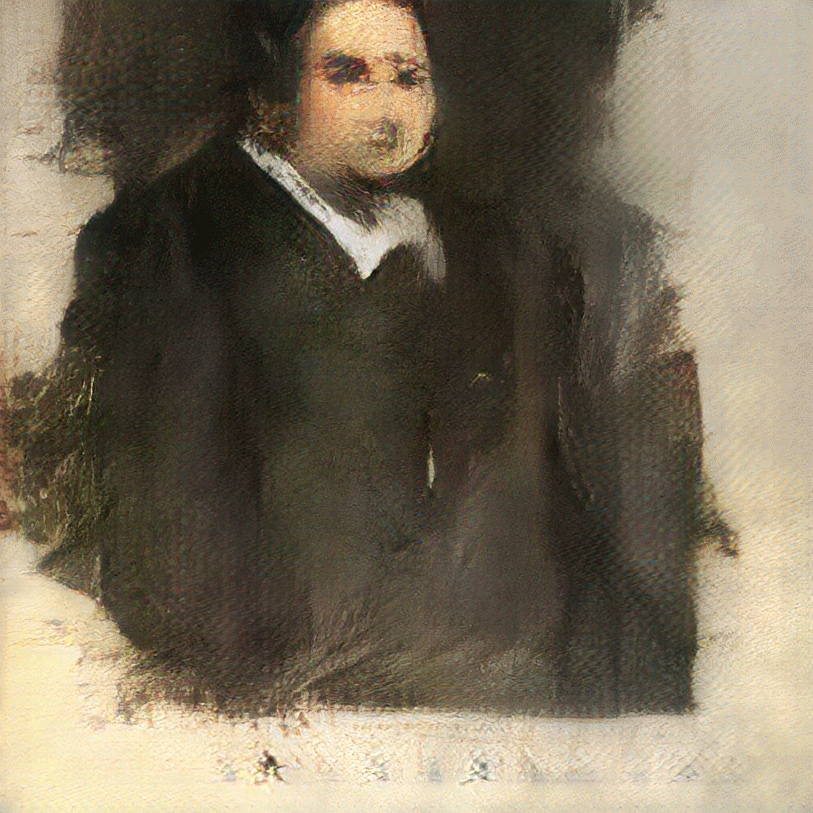Not content to let elephants do all the dirty work in the category of things that shouldn’t-make-art-but-we-made-them-make-some-anyway, a group of artists and artificial intelligence (AI) researchers going by the name Obvious has put digital brush to digital paint and set machine learning algorithms about creating a modern masterpiece. Or rather, eleven masterpieces.
Referred to as the Belamy Portraits, the eleven works are the result of a well-trained kind of AI known as a Generative Adversarial Network (GAN). By feeding in some 15,000 14th- to 20th-century portraits, Obvious helped the GAN “learn” about the commonalities throughout the source material, interpreting it to the point of being able to output its own emulation of the art.
The results are surprisingly realistic. Realistic enough for Christie’s, a British auction house to sell one of the eleven Belamy Portraits in its October Prints and Multiples sale; a landmark moment that the house is using to pose the question: Is artificial intelligence set to become art’s next medium?
A question we’re not really in a position to answer. We can, however, take a closer look at how exactly Christie’s portrait of Edmond de Belamy was created.

Repetition, Rejection… Rennaisance?
Without knowing the resulting pieces were created by machine, you would be hard pushed to call them out for what they are. The only indication of something even vaguely non-human about these expressions is the signature not of some long passed luminary, but an algebraic equation — the one that resulted in the pieces’ creation.
Speaking to Christie’s, Hugo Caselles-Dupré, one-third of Obvious, explains: “The algorithm is composed of two parts. On one side is the Generator, on the other the Discriminator.“.
Only after feeding thousands of reference images of centuries-old portraiture to the system, it is in a position to generate a passable, random approximation of the source media (for a deeper explanation, check out this fascinating blog post by Obvious).
But that isn’t the end of it. A stage of self-analysis is necessary.
“The Generator makes a new image based on the set, then the Discriminator tries to spot the difference between a human-made image and one created by the Generator.” continues Caselles-Dupré. “The aim is to fool the Discriminator into thinking that the new images are real-life portraits. Then we have a result.”
The result in this instance, it turns out, is eleven portraits that Obvious has woven a fictional aristocratic family around. Publishing a family tree that paints Edmond de Belamy as the great-grandson of a Count and Countess, this interpretation alone imparts a sense of creative effort on the AI’s work.
We’ll leave the artistic quandary of the Belamy Portraits to the experts, but close out with this from Caselles-Dupré: “for sure, the machine did not want to put emotions into the pictures. And in research terms, the idea of a robot having an open-world experience, and using it to make something new — that is pure science fiction for now.“.
The portrait of Edmond Belamy will go under the hammer in Christie’s Prints and Multiples sale at its St. James’s outpost in London, October 23-25, 2018. Obvious estimates the piece to go for between €7,000 and €10,000.
All images © Obvious

License: The text of "Christie’s Auction House to Sell AI-Generated Art" by All3DP is licensed under a Creative Commons Attribution 4.0 International License.